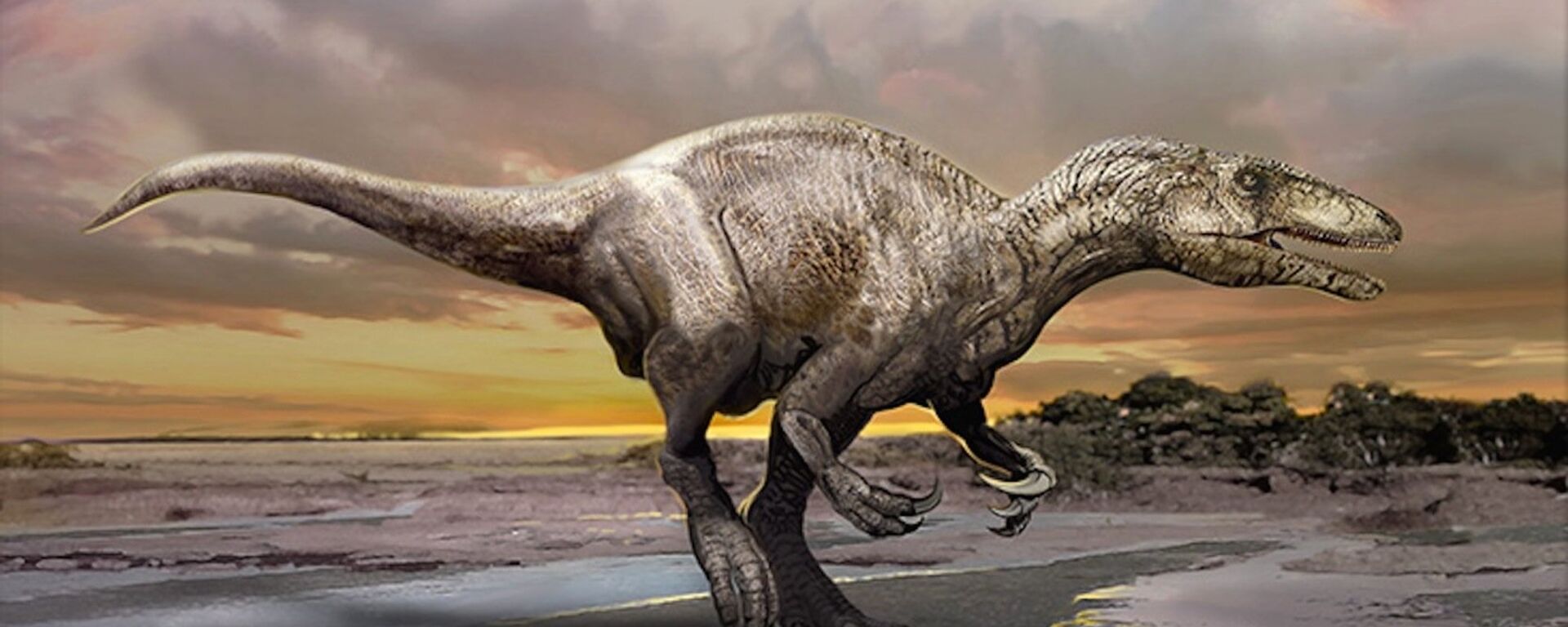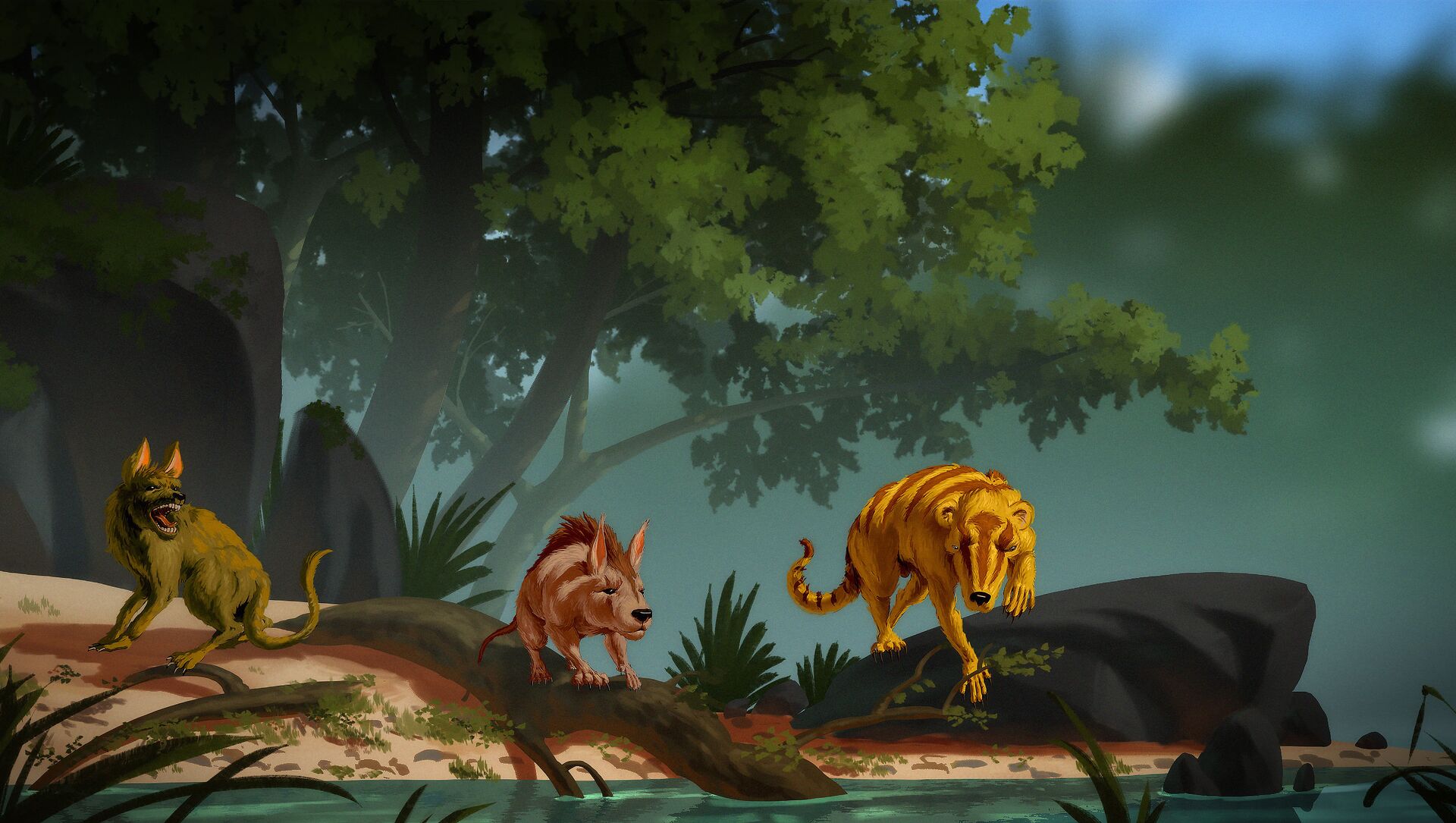https://sputnikglobe.com/20210818/researchers-discover-ancient-mammals-that-emerged-rapidly-after-dinosaur-extinction-1083648301.html
Researchers Discover Ancient Mammals That Emerged Rapidly After Dinosaur Extinction
Researchers Discover Ancient Mammals That Emerged Rapidly After Dinosaur Extinction
Sputnik International
Earlier assumptions suggested that after the mass extinction of dinos, there was relatively low mammal species diversity across the Western Interior of North... 18.08.2021, Sputnik International
2021-08-18T15:44+0000
2021-08-18T15:44+0000
2021-08-18T15:44+0000
newsfeed
world
dinosaurs
new species
mammals
extinct mammals
https://cdn1.img.sputnikglobe.com/img/07e5/08/12/1083650373_186:0:2954:1565_1920x0_80_0_0_4eb50f5ec42a148cbcd39770d8df6e85.jpg
Madelaine Atteberry and Jaelyn J. Eberle, researchers from the University of Colorado, have discovered three new species of ancient creatures that are the predecessors of modern mammals. In a study released on Wednesday in the Journal of Systematic Palaeontology, the duo says that the discovery suggests mammals evolved rapidly after the mass extinction of dinosaurs.The newly discovered pre-historic mammals – Miniconus jeanninae, Conacodon hettingeri, and Beornus honeyi – differ in size and are thought to have roamed North America during the earliest Paleocene Epoch. According to the study, the dental peculiarities place the species into the Periptychidae family of "condylarths" or the ancestors of hoofed mammals such as horses, cows, and elephants. Over 66 million years ago, the mass extinction that exterminated the non-avian dinosaurs is generally acknowledged as the beginning of the Age of Mammals."Beornus honeyi, which was about the size of a house cat, was the largest; the second discovered organism Conacodon hettingeri is similar to other species of Conacodon, but differs in the morphology of its last molar, while Miniconus jeanninae is similar in size to other small, earliest Paleocene ‘condylarths,’ but is distinguished by a tiny cusp on its molars called a parastylid," the study states.
https://sputnikglobe.com/20190902/australian-scientist-perfect-storm-mass-extinction-1076706607.html
Sputnik International
feedback@sputniknews.com
+74956456601
MIA „Rossiya Segodnya“
2021
Sushmita Panda
https://cdn1.img.sputnikglobe.com/img/07e5/05/12/1082926186_0:0:2048:2048_100x100_80_0_0_4474d0d7e27a36878eb8727832be74b4.jpg
Sushmita Panda
https://cdn1.img.sputnikglobe.com/img/07e5/05/12/1082926186_0:0:2048:2048_100x100_80_0_0_4474d0d7e27a36878eb8727832be74b4.jpg
News
en_EN
Sputnik International
feedback@sputniknews.com
+74956456601
MIA „Rossiya Segodnya“
Sputnik International
feedback@sputniknews.com
+74956456601
MIA „Rossiya Segodnya“
Sushmita Panda
https://cdn1.img.sputnikglobe.com/img/07e5/05/12/1082926186_0:0:2048:2048_100x100_80_0_0_4474d0d7e27a36878eb8727832be74b4.jpg
newsfeed, dinosaurs, new species, mammals, extinct mammals
newsfeed, dinosaurs, new species, mammals, extinct mammals
Researchers Discover Ancient Mammals That Emerged Rapidly After Dinosaur Extinction
Earlier assumptions suggested that after the mass extinction of dinos, there was relatively low mammal species diversity across the Western Interior of North America. However, the researchers suggest that the discovery of these new ancient creatures suggests rapid diversification.
Madelaine Atteberry and Jaelyn J. Eberle, researchers from the University of Colorado, have discovered three new species of ancient creatures that are the predecessors of modern mammals. In a
study released on Wednesday in the Journal of Systematic Palaeontology, the duo says that the discovery suggests mammals evolved rapidly after the
mass extinction of dinosaurs.
The newly discovered pre-historic mammals – Miniconus jeanninae, Conacodon hettingeri, and Beornus honeyi – differ in size and are thought to have roamed North America during the earliest Paleocene Epoch.

2 September 2019, 15:48 GMT
According to the study, the dental peculiarities place the species into the Periptychidae family of "condylarths" or the ancestors of hoofed mammals such as horses, cows, and elephants. Over 66 million years ago, the mass extinction that exterminated the non-avian dinosaurs is generally acknowledged as the beginning of the Age of Mammals.
"Beornus honeyi, which was about the size of a house cat, was the largest; the second discovered organism Conacodon hettingeri is similar to other species of Conacodon, but differs in the morphology of its last molar, while Miniconus jeanninae is similar in size to other small, earliest Paleocene ‘condylarths,’ but is distinguished by a tiny cusp on its molars called a parastylid," the study states.
"When the dinosaurs went extinct, access to different foods and environments enabled mammals to flourish and diversify rapidly in their tooth anatomy and evolve larger body size. They clearly took advantage of this opportunity, as we can see from the radiation of new mammal species that took place in a relatively short amount of time following the mass extinction," lead author Atteberry said.




